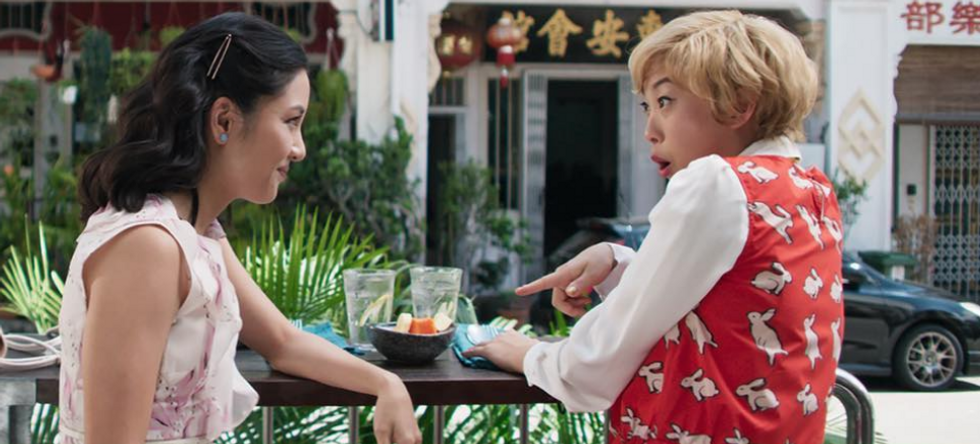Growing up, I loved films of the Disney renaissance. Their songs, storylines, and vivid animation were the perfect dream worlds for kids all over, including myself. Beyond that, however, two films, in particular, took on a special meaning to me—"Aladdin" and "Mulan" were arguably my two favorites when I was younger, mostly because I could see myself in their leading female characters, Jasmine and Mulan, two strong, young Asian women who were willing to fight for good and give up the ideals of their family for love and honor. Having that kind of representation as a young Asian girl gave me a tie to those films that other Disney films, particularly those of the early era, could not.
Beyond my own personal experiences, I have seen other people find amazing, genuine connections with films for their portrayal of their culture, or simply a wonderful, fleshed out character who looks like them with films like "Coco" and "The Princess and The Frog."
However, these representations felt few and far between for many, until recently. With the amazing, African-American led, "Black Panther" turning almost a year old, the recent release of, "Spider-Man: Into the Spiderverse," and the announced development of "Silk," a film starring an Asian-American female superhero, I thought now would be the perfect time to discuss diversity within media as it relates to children, and just how much our future generations can benefit from having heroes and heroines who look just like them.
One story that really stuck with me with discussing this topic was this amazing twitter thread by Kimmy Yam, a writer specializing in Asian-American issues for The Huffington Post. Her frank retelling of her struggles with race emphasized just how important films like "Crazy Rich Asians" are for people who have long struggled with their views of their own race and upbringing. Having that kind of film be as widely successful as it was proven that films don't need to have a particular race of people within them in order to succeed.
There is often talk of a "token *insert race here* character" that is formulaic of films in order to in some way please some kind of demographic. However, films like "Crazy Rich Asians" and "Black Panther" proved how wrong that trope has become. Movies are now more accessible than ever, and having the pride of your culture being a part of something so successful and loved shows how important and vibrant your culture is to the world. Particularly with "Black Panther," the filmmakers took many different aspects of different African cultures and created a world so vibrant, lively, and beautiful—it defied the kinds of stereotypes many people have created regarding African nations. This idea of both sharing and reclaiming culture is so important, especially for young people, who may be experiencing what a young Kimmy Yam did, shame and the feeling of having to hide of her culture and heritage that no child should ever feel the need to experience again.
On this topic of the young children who will grow up to become the future leaders and innovators of our world, I want to discuss the evident, profound effects diversity within their media has had on them already. All over social media are countless, adorable examples of young children inspired by characters who look just like them on the big screen. A very current example of this is the success and reception of the film, "Spider-Man: Into The Spiderverse." The film turns its focus away from just Peter Parker, a wonderful example in his own right as a character to relate with, to focus on other iterations of the hero, particularly Miles Morales. Miles works as a character not only in his relatability on how he comes to accept and harness his newfound abilities, but also in the idea that heroes like Spider-Man can pass on the mantle and have their personas filled by diverse, but equally capable shoes.
Unlike the hero of Black Panther, who has been an African-American hero and icon from his inception, Miles Morales goes to show that heroes who already have a storied, well-versed history can represent other people of different backgrounds who take on the persona as well. It was the late Stan Lee who once said, "What I like about the costume is that anybody reading Spider-Man in any part of the world can imagine that they themselves are under the costume. And that's a good thing." Though Peter Parker was the only universally known Spider-Man for a long time, "Spider-Man: Into The Spiderverse" and films like it has paved the way for every child to see someone who looks like them take on the iconic mantle and prove themselves just as heroic and as worthy of the title of superhero.
There is a lot to be said about superheroes, franchises, and other forms media have taken on, but there is no denying their influence and their availability to children. Beyond toys, costumes, and merchandise, these kinds of characters remind children that they can be strong too—like their favorite characters, they can fight for what is right and face the adversities life may throw their way. We cannot predict the future, but we can prove to the children that will help build that future that their diverse cultures, races, and backgrounds are strong foundations to build themselves upon.















